Section 1: Introduction to Computer Security What is computer security? Computer security is the practice of safeguarding computers and data from unauthorized access, damage, and theft. In this section, we’ll explore the importance of computer security and the potential risks of not securing your devices. It is important to protect your computer security because it can help to protect your personal information, financial data, and intellectual property. Think about your smartphone, laptop, or desktop computer. These devices store valuable personal and financial information. What would happen if someone gained unauthorized access to your email, social media, or banking accounts? Types of computer security threats There are many different types of computer security threats, including: Malware: Malware is software that is designed to harm a computer system. Malware can include viruses, worms, trojans, and ransomware. Phishing: Phishing is a type of social engineering attack that involves sending emails or text messages that appear to be from a legitimate source. The goal of phishing is to trick the recipient into clicking on a link or providing personal information. Hacking: Hacking is the process of gaining unauthorized access to a computer system or network. Hackers can use this access to steal data, install malware, or disrupt operations. Data breaches: A data breach is an incident in which sensitive data is exposed to unauthorized individuals. Data breaches can occur as a result of malware attacks, phishing attacks, or human error.
Section 2: Basic Security Hygiene How to protect your computer security? There are many things you can do to protect your computer security, including: Use strong passwords: Use strong passwords that are at least 12 characters long and include a mix of upper and lowercase letters, numbers, and symbols. Keep your software up to date: Keep your operating system, web browser, and other software up to date with the latest security patches. Be careful what you click on: Don’t click on links in emails or text messages from senders you don’t know. Use a firewall and antivirus software: Use a firewall and antivirus software to protect your computer from malware attacks. Be careful what information you share online: Don’t share your personal information, financial data, or passwords online unless you are sure it is safe to do so. Basic security hygiene involves essential practices to protect your devices and data. We’ll cover the creation of strong and unique passwords, the implementation of multi-factor authentication (MFA), and the importance of configuring user accounts and access controls properly.
Section 3: Securing Operating Systems Operating systems are the core software that runs on your devices. Ensuring their security is crucial. We’ll explore how to keep your Windows, macOS, or Linux system updated with the latest security patches. Proper user account management and understanding of privilege escalation will also be covered. Check for the latest updates on your operating system (e.g., Windows Update) and install any pending security patches. Create a new user account and experiment with different levels of access to understand privilege escalation.
Section 4: Protecting Against Malware and Viruses Malware, such as viruses, worms, and ransomware, can cause significant harm to your computer and data. Learn about antivirus and anti-malware software, how they detect and remove malicious software, and best practices to avoid infection. Download a sample malware file from a reputable security testing website. Run a malware scan using your installed antivirus software to see how it detects and handles the threat.
Section 5: Safe Web Browsing and Email Practices The internet is full of potential risks. We’ll delve into safe web browsing practices, including recognizing and avoiding phishing attempts. Additionally, we’ll discuss web browser security settings and email best practices to protect against cyber threats. Analyse a suspicious email and identify signs of a phishing attempt. Practice reporting the email to your email provider to prevent further harm.
Section 6: Wireless Network Security Wireless networks are vulnerable to unauthorized access. Learn how to secure your Wi-Fi with strong encryption, configure router settings properly, and use intrusion detection techniques to monitor network activity. Access your router’s settings and set up WPA2 or WPA3 encryption for your Wi-Fi network. Change default router credentials and use intrusion detection tools to monitor network activity.
Section 7: Data Backup and Recovery Data loss can occur due to hardware failures, malware attacks, or accidental deletion. Discover the importance of regular data backups and how to set up automated backup solutions using local and cloud-based options. Schedule an automated backup of your important files and verify the backup’s integrity. Practice restoring files from the backup to ensure a smooth recovery process.
Section 8: Encryption and Data Protection Encryption is a critical tool to protect sensitive information. Learn about data encryption, encrypting files and folders, and the benefits of full disk encryption. Encrypt a sensitive document using a file encryption tool and practice decrypting it to understand the encryption and decryption process.
Section 9: Advanced Security Measures Advanced security measures can enhance your overall protection. We’ll explore firewalls, intrusion detection systems (IDS), and virtual private networks (VPNs) to strengthen your security posture. Configure a software firewall on your computer and simulate an intrusion detection test to monitor network activity. Set up a VPN connection to secure your internet traffic.
Section 10: Securing Personal and Work Environments Computer security is an important issue that everyone should be aware of. By following the tips in this training, you can help to protect your computer security and keep your personal information safe. Physical security is also as important as digital security. We’ll discuss physical security measures for desktops, PCs, laptops, and mobile devices. Moreover, we’ll emphasize the importance of maintaining a security-conscious mindset in various environments.
